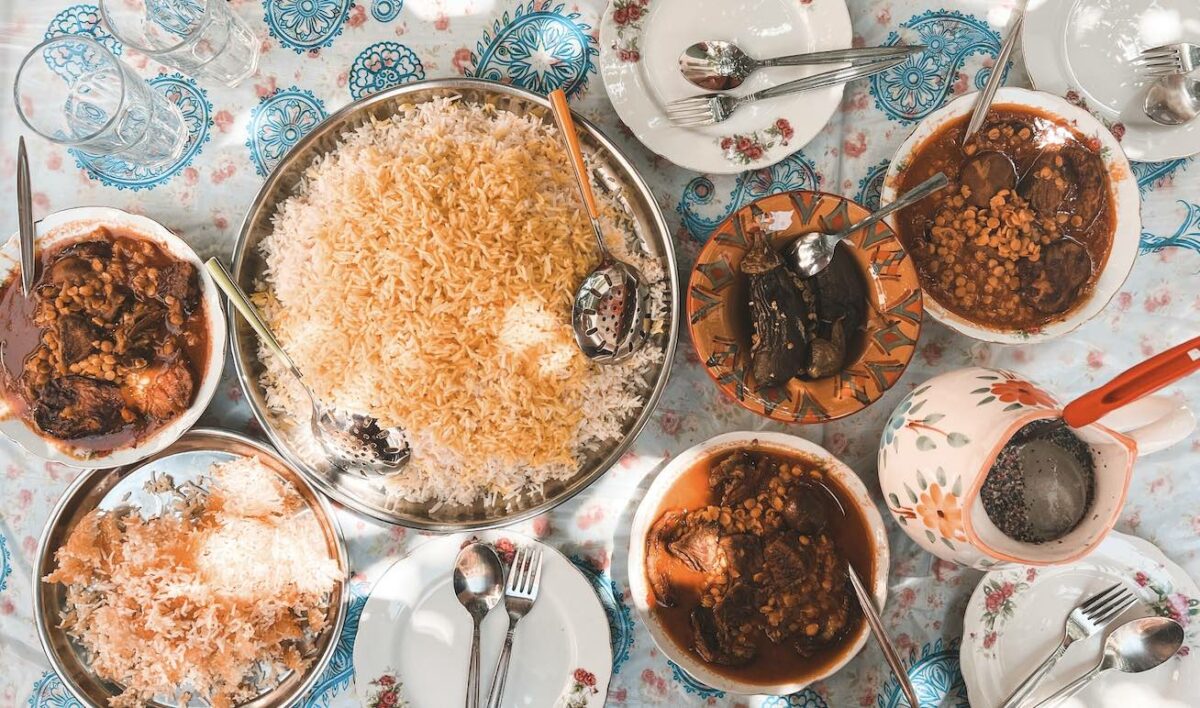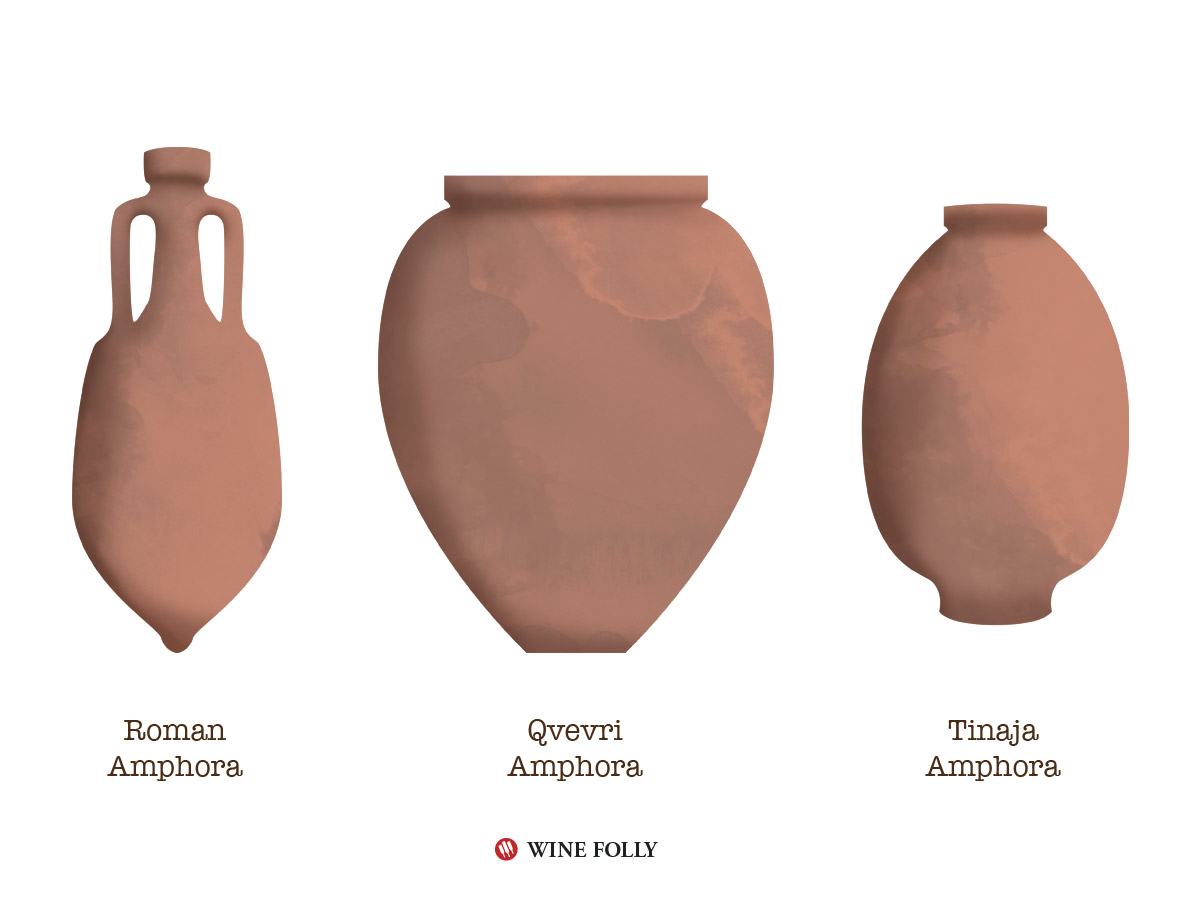Georgia’s ancient and most widespread grape, Rkatsiteli (the “ts” represents a Georgian letter and is pronounced as one sound), is often produced using traditional techniques involving skin contact and qvevri fermentation. These methods can lend the wines a rich amber color and complex flavors, ranging from crisp green apple and citrus to deeper notes of honey and walnut.
Rkatsiteli typically has moderate to low acidity, which is why producers often blend it with other varieties that provide more acidity and freshness. While most white grapes are harvested at a pH of 2.9–3.5, the pH of Rkatsiteli at harvest is frequently 3.8. Its acidity is texturally supported in wines made with skin contact or by blending with higher-acid grapes.
Also known as: Baiyu
Table of Contents
Primary Flavors
- Pineapple
- Lime
- Resin
- Tarragon
- Fennel
Taste Profile
Rkatsiteli can make a wide range of wine styles. As it ripens, it achieves high sugar levels while maintaining moderate acidity. This balance makes it suitable for various styles of wine, including traditional qvevri amber wines, dry whites, and even semi-sweet expressions.
On the nose, Rkatsiteli typically exudes green apple, citrus, and herbal hints. In its qvevri-fermented, skin-contact version, aromas of honey, dried apricot, and earthy nuances may emerge. Other expressions tend to emphasize crisp citrus, while those made with skin contact offer richer and more exotic aromas.
On the palate, styles range from light and zesty with moderate acidity to full-bodied and textured, with a complexity brought out through qvevri and skin contact. Wines can be dry or semi-sweet, and traditional amber wines made with skin contact in qvevri provide an intricate balance of tannins, depth, and unique flavor profiles. In its multitude of expressions, Rkatsiteli embodies the rich tradition and innovative spirit of Georgian winemaking.
How to Serve Rkatsiteli Wine
Rkatsiteli wines are typically served chilled, enhancing the freshness of modern, crisp styles. Traditional, skin-contact amber wines may be served slightly warmer to reveal their complexity. A white wine glass suits most Rkatsiteli wines, with a broader glass potentially chosen for the richer, skin-contact versions. Many Rkatsiteli wines are made for immediate enjoyment, but some have the acid and concentration to improve over many years.

SERVE
45–55°F / 7-12°C
GLASS TYPE
White
DECANT
No
CELLAR
3-5 Years
Rkatsiteli Food Pairing
Rkatsiteli’s versatility shines in its pairing ability. Crisp styles complement light dishes, while the traditional skin-contact amber wines match well with spiced meats and aromatic rice from Lebanese, Turkish, and Iranian cuisines. This range allows Rkatsiteli to be paired seamlessly with a variety of world flavors, reflecting its multifaceted character.

5 Fun Facts About Rkatsiteli
- Rkatsiteli is one of the oldest grape varieties, with a history tracing back over 3,000 years.
- It was once one of the world’s most planted white grape varieties due to its intense plantings in the Soviet Union.
- The grape’s name, “Rkatsiteli,” translates to “red stem” in Georgian.
- Rkatsiteli vines can withstand extremely cold temperatures.
- There are more Rkatsiteli vineyards around the world than Pinot Gris or Cabernet Franc.

Where it Grows
Rooted in Georgia’s rich winemaking history, Rkatsiteli became the main grape variety planted during the Soviet era in the USSR. As a result, it’s predominantly found in ex-Soviet countries, including Georgia, Russia, and Ukraine. Though it has spread, its unique character and traditional expressions remain a symbol of Georgian wine culture, reflecting its legacy within the region.
- Georgia: 62,575 acres (25,323 hectares)
- Russia: 16,005 acres (6,477 hectares)
- Ukraine: 14,270 acres (5,775 hectares)
- Bulgaria: 13,381 acres (5,415 hectares)
- Moldova: 9,632 acres (3,898 hectares)
- Kazakhstan: 8,777 acres (3,552 hectares))
Total Vineyard Area – 126,950 acres (51,374 hectares) (Source: University of Adelaide, 2021)

Georgia
What to expect: Rkatsiteli, as a central figure in Georgian winemaking, offers diverse expressions, with the most renowned coming from the eastern region of Kakheti. Here, the grape’s true character shines through various styles, influenced by both modern and ancient winemaking techniques.
Kakheti: Known for its traditional qvevri wines, Kakheti’s Rkatsiteli exhibits rich amber hues and complex aromatics of dried apricot, honey, and walnut, paired with a textured body and refreshing acidity. Using skin contact and earthenware vessels, the region’s winemaking mastery emphasizes the grape’s unique characteristics, creating world-class, cellar-worthy wines. The beauty of Kakheti’s landscape adds to the allure, making it a must-visit for wine enthusiasts seeking the authenticity of Georgian wine culture.

In-Depth Knowledge
Take a deep dive into understanding the complex nature of Rkatsiteli.
A Long History
Rkatsiteli’s roots stretch back over 3,000 years, making it one of the oldest known grape varieties. Originating in the fertile lands of Georgia, it has long been integral to the region’s cultural identity.
The ancient art of winemaking thrived in Georgia, with Rkatsiteli playing a prominent role. Archaeological findings show evidence of early cultivation and winemaking techniques that underscore the grape’s importance to the local economy and society.
During the Soviet era, Rkatsiteli’s versatility led to widespread planting across the USSR. It became the primary grape for bulk wine production, often leading to high yields but weak flavors. During this period, the emphasis on quantity over quality pushed the grape away from its traditional expressions.

What’s a Qvevri?
Qvevri winemaking is a traditional Georgian method that dates back thousands of years. It is vital to the country’s cultural heritage that UNESCO has recognized it as part of the Intangible Cultural Heritage of Humanity.
The process involves using large earthenware vessels called qvevri, which are buried underground. These vessels provide a stable temperature for fermentation and aging, allowing the wine to develop complex flavors and textures.
In the qvevri method, Rkatsiteli grapes often ferment with their skins, stems, and seeds, leading to amber wines rich in tannins and aromatics. The prolonged skin contact adds depth and complexity, creating a wine that is both robust and nuanced.
The shape of the qvevri, with its pointed bottom and wide body, promotes natural circulation during fermentation. Sediments settle at the narrowest part, allowing clear wine to be drawn off while leaving behind the solids.
Qvevri winemaking emphasizes minimal intervention, letting nature and time shape the wine’s character. The practice is enjoying a resurgence, with both traditional producers and modern winemakers embracing it. It encapsulates the essence of Georgian wine, weaving together history, tradition, and innovation.